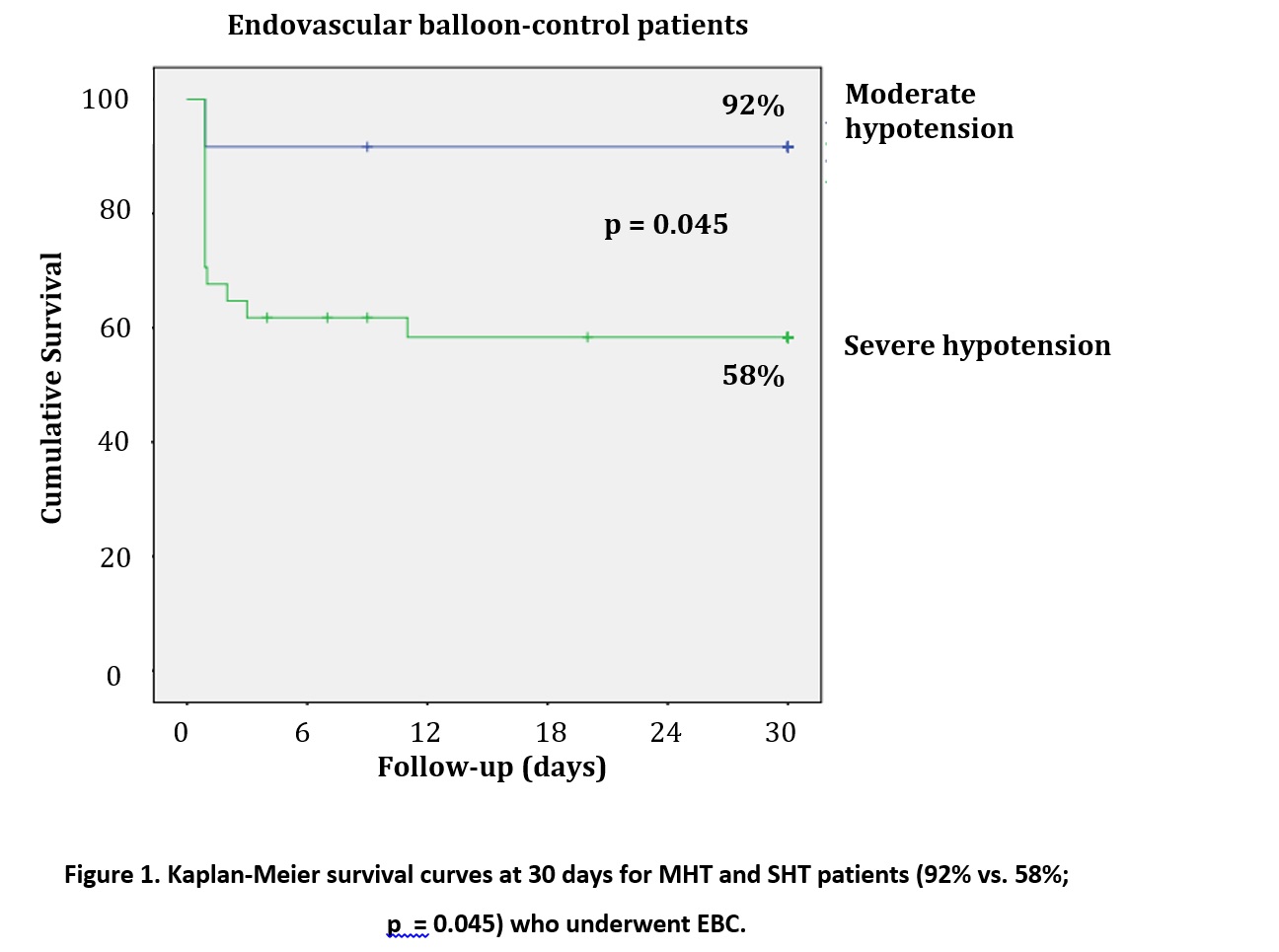Contemporary Outcomes for Ruptured Abdominal Aortic Aneurysms using Endovascular Balloon-Control for Hypotension
Jonathan Bath, Jose O. Leite, Maham R. Rahimi, Joseph S. Giglia, George H. Meier.
University of Cincinnati, Cincinnati, OH, USA.
OBJECTIVES: Ruptured abdominal aortic aneurysm (rAAA) continues to portend significant mortality, despite endovascular aneurysm repair (rEVAR), enhanced perioperative care and endovascular balloon-control (EBC) for hypotension. We review our academic institution experience utilizing a protocol of EBC for all hypotensive patients, irrespective of type of repair.
METHODS: Retrospective review of 66 cases of RAAA treated at a single academic institution from 2007 to 2016 utilizing EBC for hypotensive patients. Demographics, co-morbidities, intraoperative parameters and clinical outcomes were recorded. Patients were studied with respect to hemodynamic status, EVAR or open repair (rOAR) in the setting of EBC for hypotension. RESULTS: rEVAR was performed in 43 patients (65%) and rOAR in 23 patients (35%). rAAA was treated in 51 men (77%). Mean RAAA size was 7.6 and mean patient age was 73. Perioperative survival was 82%. Overall survival at 30 days, 1 and 5 years was 71%, 67% and 64%. Blood transfusion and severe hypotension (SHT) were significant predictors of mortality at 30 days on multivariable analysis (OR 1.2; p=0.08 and OR 39; p=0.03 respectively). SHT was defined as a MAP <65 and vasopressor use and was present in 59% of the cohort. Normotension (NT) was an absence of these conditions and was present in 12%, with 29% of patients exhibiting moderate hypotension (MHT). There was no difference in 30 day survival between NT and MHT patients. In all patients who underwent EBC the 30 day survival (Figure 1) for SHT patients was 58% versus 92% for MHT patients (p = 0.045) with a significant difference between groups that persisted at 1 year (92% vs. 53%, p=0.02) and 5 years (75% vs. 53%, p=0.04). CONCLUSIONS: Good mid-term outcomes for moderately hypotensive and normotensive patients can be obtained using an EBC protocol for hypotension with a regionalized transport system directly to the OR. Severely hemodynamically-unstable rAAA patients still pose a significant challenge despite mitigation of hypotension by EBC suggesting that survival may be compromised by factors other than hypotension alone. We still advocate for the use of EBC for all hypotensive patients as a standard of care prior to definitive repair.

Back to 2017 Program




